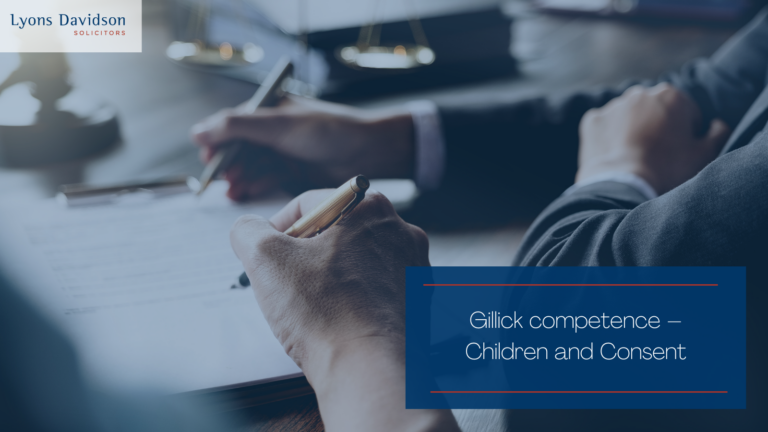Laura Merry, Senior Associate in LD’s Head Injury Team attended the first APIL Child Injury Conference on 29 November at the Bloomsbury Hotel, London. In her role as APIL Child Injury Special Interest Group Coordinator, Laura had also helped devise the programme for the conference, which focused on serious child injury.
Children with acquired brain injury
The APIL Child Injury Conference was chaired by Neil Sugarman, APIL Executive Committee member. The opening address was given by Lisa Turan, Chief Executive of the Child Brain Injury Trust, who is playing a key role in the development of commissioning standards for children with acquired brain injury with the Department of Health. She revealed that 40,000 children a year sustain a head injury, mainly through road accidents, falls and sport or play injuries, but also illness, stroke and brain tumour. Her talk summarised how head injury affects child and family, emphasising the importance of early intervention with education, family support, and effective and consistent rehabilitation. She also pointed out that society needs a greater knowledge and understanding of brain injury and that brain injury services need resourcing.
School Action
Beth Wicks, Independent Education Consultant was next to take to the podium. A director of the International Paediatric Brain Injury Society and member of the Criminal Justice and Acquired Brain Injury Interest Group, she outlined what a special educational need is: where a child has a learning difficulty that calls for special educational provision to be made for them. She discussed Codes of Practice and explained both ‘School Action’, where a child might have additional provision such as one-to-one tuition and ‘School Action Plus’, which always involves consultation with outside specialists.
She then covered Individual Education Plans (IEPs) and the proposed changes to education legislation by way of the Special Educational Needs and Disability green paper, and the Children and Families Bill, currently timetabled for Royal Assent and implementation in spring 2014, with a Code of Practice to follow. The major changes on the horizon include a single assessment process replacing statutory assessments, statements of special educational needs and learning disability assessments, and new Education, Health and Care plans that will apply from birth to the age of 25.
Neurological rehabilitation
She was followed by Mike Barnes, Professor of Neurological Rehabilitation, University of Newcastle upon Tyne and Medical Director of Hunters Moor Neurorehabilitation, who spoke about life expectancy. He explored the current accepted methodology and went through some key research papers, such as Hutton and Pharoah, and Hemming et al. He also discussed immobility and the bearing this can have on life expectancy, with issues such as DVT, pulmonary embolus, pressure sores, osteoporosis, respiratory and renal changes.
He described the significant increase in life expectancy since 1910, when it was 51 for men and 55 for women; figures from 2012 suggest that it is now 90.5 for men and 94 for women, with geography and social class playing a part, along with lifestyle factors. Happiness and marriage have a positive effect on life expectancy, he pointed out, and rehabilitation also promotes recovery and reduces complications. Professor Barnes concluded by discussing future improvements: these are likely to include nerve grafts, nerve-growth promotion, neural plasticity, and better monitoring by MRI and fMRI.
Statementing process
The next speaker, John McKendrick, barrister at Outer Temple Chambers, provided a summary of education law. He discussed the legal aspects of the statementing and appeal processes and other legal remedies available, and pointed out that the future remains uncertain with regard to the Children and Families Bill.
Brain injury speech therapy
He was followed by Miranda Loveday, Clinical Lead, Speech and Language therapy at King’s College Hospital, London who spoke about the million patients who present each year at hospitals in the UK with head injuries, of whom almost 50% are under the age of 16. Children seen at Kings College Hospital’s neurosurgical unit have sustained ongoing cognitive and communication difficulties, and they often face difficulties in school, home and the community. As they become older, the difficulties become greater. As children can be labelled just as ‘naughty’ or ‘difficult’, she emphasised the importance of a good understanding of these problems, and the ways a speech and language therapist can help, dealing with anything from specific language impairments to feeding or swallowing difficulties.
Dysphagia
Lindsay Oliver, Speech and Language Therapy Coordinator at ILS Rehabilitation Services discussed the eating and drinking disorder dysphagia, which can result in food penetrating the lungs and causes a great deal of stress. She discussed the importance of speech and language therapy in reintegrating the child with an injury into education, pointing out that therapy is available (usually by the NHS) through statutory provision in the case of child injury, although there is also provision in the independent sector, through charitable organisations and rehabilitation services, which may be funded as part of a claim for personal injury.
Erbs palsy
Julia Ho, Consultant Occupational Therapist spoke about her experiences providing assessments and reports on people who have sustained brain injuries, spinal injuries, amputations, cerebral palsy and Erb’s palsy. She also gave examples of how aids and equipment can promote independence and improve quality of life for the children she works with.
Paediatric neurology
Professor Michael Vloeberghs of the Queens Medical Centre at Nottingham University Hospital spoke about paediatric neurology. His clinical practice includes movement disorder in cerebral palsy cases and he also deals with all types of paediatric neurological-neurosurgical diseases. Dr Vloeberghs discussed birth injury caused by obstetric mishap or a delay in decision-making: damage in birthing injuries can result in cerebral palsy or quadriplegia. He noted that, essentially, there has been no great change in improving the outcome for brain injury and said that the future of treatment lies in prevention, education and training.
Phillipa Whipple QC at One Crown Office Row addressed some of the more significant developments in the law affecting claims brought on behalf of seriously injured children. She discussed cases relevant to liability, procedural matters and some recent quantum decisions, including Woodland v Leeds Teaching Hospital NHS Trust [2012], which involved untreated acromegalic gigantism from the age of 13, caused by an undetected tumour on the pituitary gland. Total damages of £1.2 million (including £120,000 general damages) were awarded.
Also from One Crown Office Row, Barrister Maria Roche spoke about child injury claims where learning difficulties or disabilities are a result of clinical negligence or personal injury. She explained that the costs associated with negligently caused special educational needs can form part of a claim. The changing nature of (and restrictions on) public funding for children with special educational needs creates great uncertainty for carers, particularly in light of the recent green paper on the subject. In May 2012, the Department of Education announced that a draft Bill on special education needs would be included as part of the Children and Families Bill. Although Royal Assent is not expected until 2014, there are a number of important consequences in terms of the shifting legal landscape. Her talk addressed the current public law framework, the provision of education to children with special educational needs and outlined pitfalls associated with settlement of a claim.
Lyons Davidson’s Head Injury Department specialises in dealing with head injury claims on behalf of the injured party. For more information contact Laura Merry by email: [email protected] or phone: 0117 904 5718.



